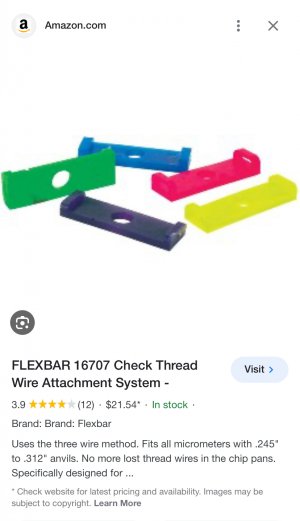- Joined
- Jan 20, 2018
- Messages
- 5,628
For a quick calculation of compound infeed, I use the sides of a 30-60-90 triangle, which are 1,2, √3. Divide the single-depth of the thread by 1.732 (√3) then multiply by 2 to get the compound infeed. Keep in mind that this gives a rough value since we don't set the compound to exactly 30º and the tool does not come to a sharp point. Start checking before you reach the calculated value, if you go all the way you have gone too far.
(Someone please check me on this, still waiting for the coffee to kick in.)
(Someone please check me on this, still waiting for the coffee to kick in.)
Last edited:




